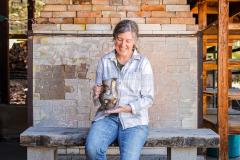Courting the Flame
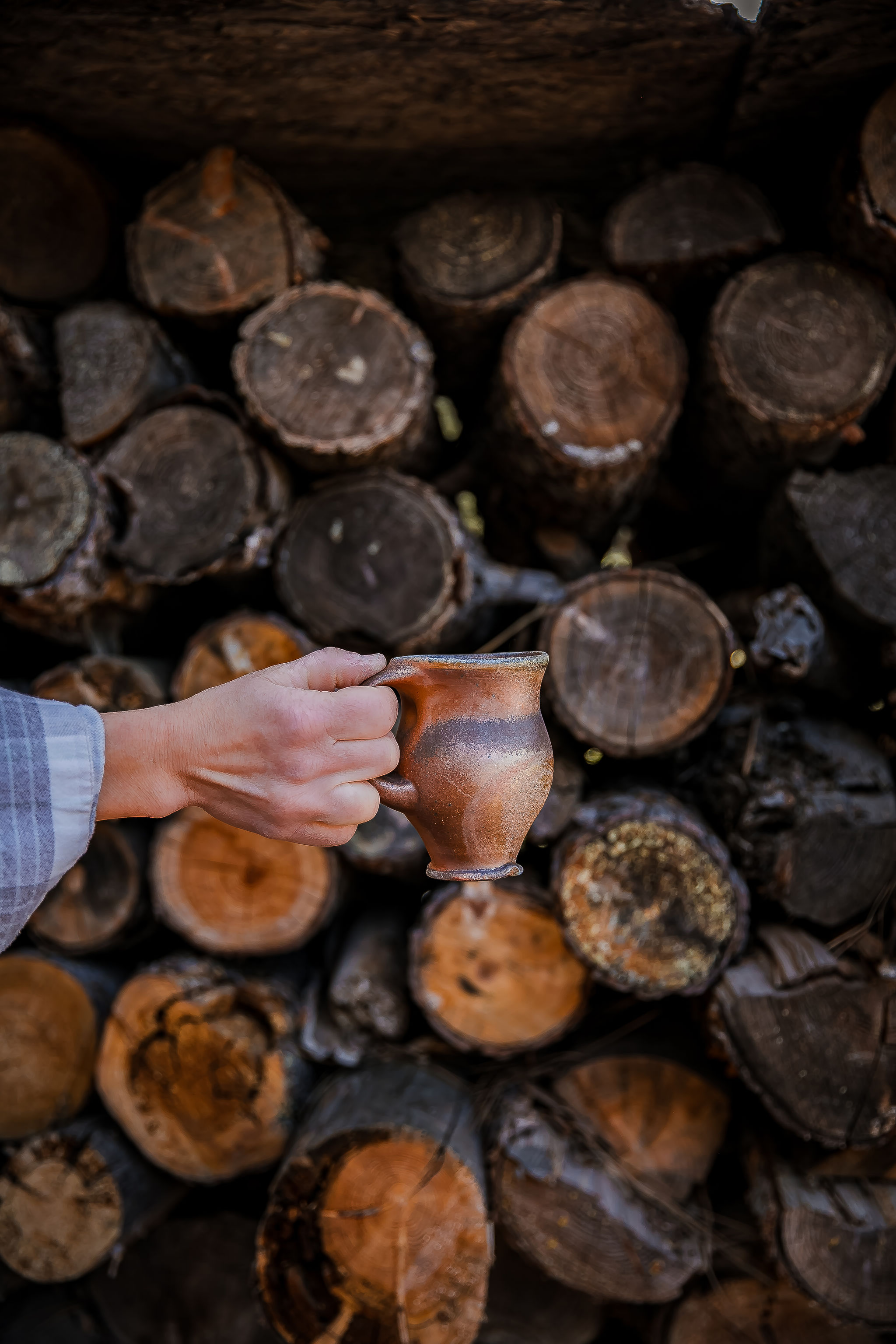 As a young potter in my first semester at the University of Tennessee, I participated in my first wood-firing. The close-knit community, along with the nonacademic atmosphere of learning and mentoring, quickly captivated my interest. Nearly thirty years ago, that moment became the spark that lit my path as a wood-fired ceramic artist. Like any good fire, it started slowly, building over many years of acquiring knowledge, learning, and failing. I remained true to this love through grad school and through residencies. Like many young potters, I helped friends stoke kilns in the middle of the night. I cleaned kiln shelves and hauled wood for hours just for a chance to be near the fire. Each experience added a layer – not unlike the layers of ash and flame that build on a pot – until I eventually built my own kiln and began firing my own work in earnest.
As a young potter in my first semester at the University of Tennessee, I participated in my first wood-firing. The close-knit community, along with the nonacademic atmosphere of learning and mentoring, quickly captivated my interest. Nearly thirty years ago, that moment became the spark that lit my path as a wood-fired ceramic artist. Like any good fire, it started slowly, building over many years of acquiring knowledge, learning, and failing. I remained true to this love through grad school and through residencies. Like many young potters, I helped friends stoke kilns in the middle of the night. I cleaned kiln shelves and hauled wood for hours just for a chance to be near the fire. Each experience added a layer – not unlike the layers of ash and flame that build on a pot – until I eventually built my own kiln and began firing my own work in earnest.
Wood-firing is more than a process. It's a commitment. A way of life. There’s integrity in the required rhythm. You don't just load a kiln and flip a switch. You court the flame, and you live by its tempo. There are weeks of making, then days of glazing, wadding, and stacking. Loading the kiln with strategic care, knowing each pot's placement will define its future. Then, during the firing, teams of dedicated hands tend the fire, working collaboratively towards a shared goal, bonding over shop talk and shared meals, sometimes while delirious from lack of sleep.
Somewhere in that chaos, a kind of intimacy forms – not just between potter and fire, but among all the people involved. There is something ancient and elemental about this process. From the slow, calm beginning with a small campfire-like flame, while watching a peaceful sunrise, to the crackling, raging beast that consumes wood by the wheelbarrow load as it reaches its final temperatures. It's communal. A ritual of patience and faith.
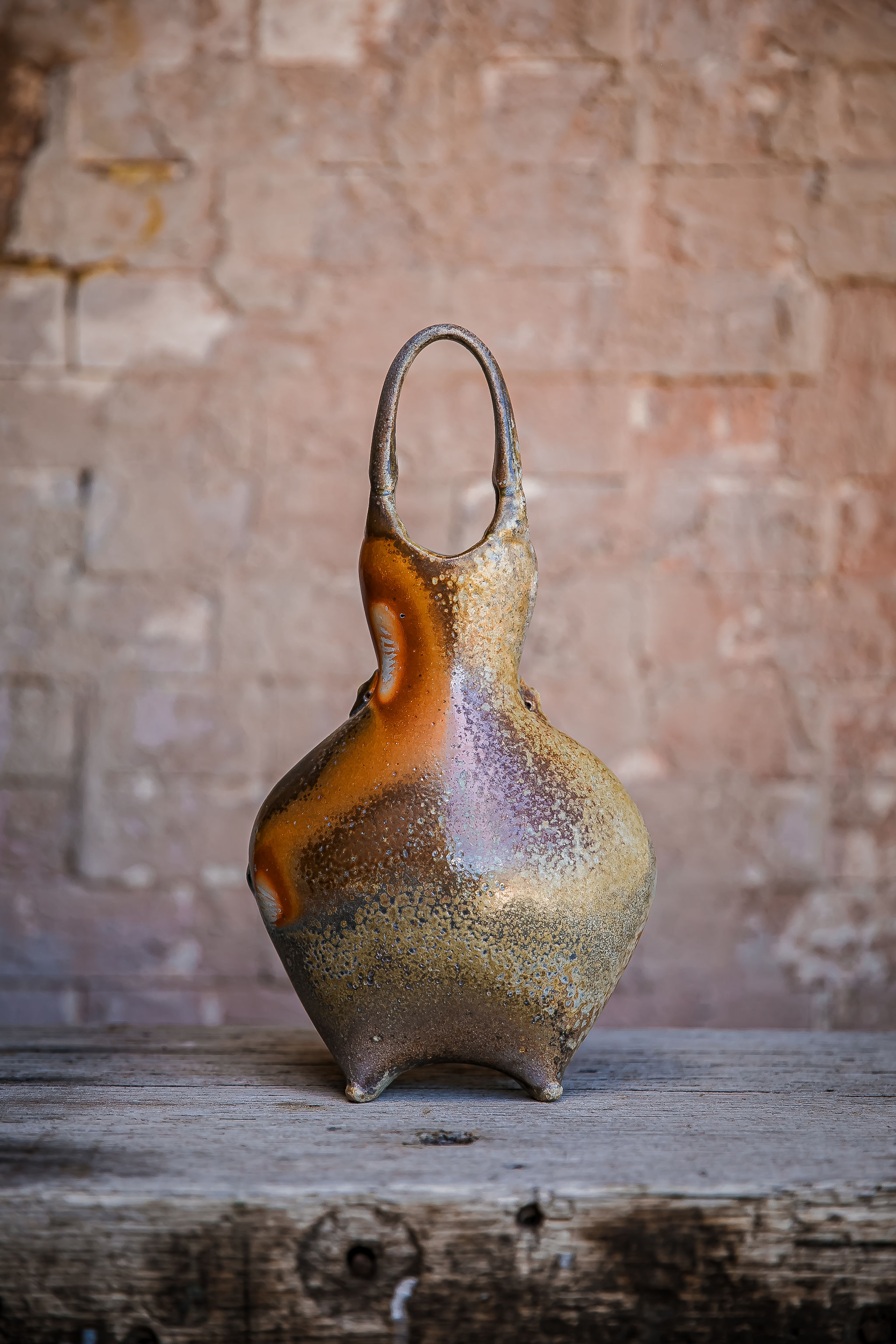 The Gift of Uncertainty
The Gift of Uncertainty
In a world increasingly obsessed with control, speed, and repeatability, wood-firing offers none of those. It is an act of surrender. I can shape the clay, choose the flashing slips, position the work in the kiln – but after that, I must let go. I work with the crew to tend the fire in hopes of guiding the kiln through crucial points in the process and achieving desired levels of reduction. Yet ultimately, the fire will decide the final marks on the pottery.
Some pots come out radiant, with runny, drippy ash, or dramatic comets. Others come out with subtle flashing and a dusting of light ash. While I have an idea of what each zone in the kiln can produce, there is no guarantee. That's the price – and the gift – of working with fire as a collaborator. This keeps me humble. I do my best to create the conditions that will produce the surfaces I’m looking for. Yet even with the best-made plans, there’s always the element of chance.
Women, Wood-firing, and Reclaiming Labor
As a woman working in wood-firing, I want to acknowledge the physicality – and the history – of this work. Wood kilns are not delicate systems. They require strength, sweat, and logistics. They have often been framed as masculine spaces, passed down in a lineage of male mentors. That's slowly changing. And I hope to be a part of this change in our community. I've worked hard to cultivate my own relationship to this process – not by mimicking toughness, but by honoring endurance, by inviting collaboration and community. I've held workshops where women and nonbinary folks who've never fired a kiln before found their footing in front of the firebox. I've watched the power shift – not through dominance, but through a gentle presence and inclusivity.
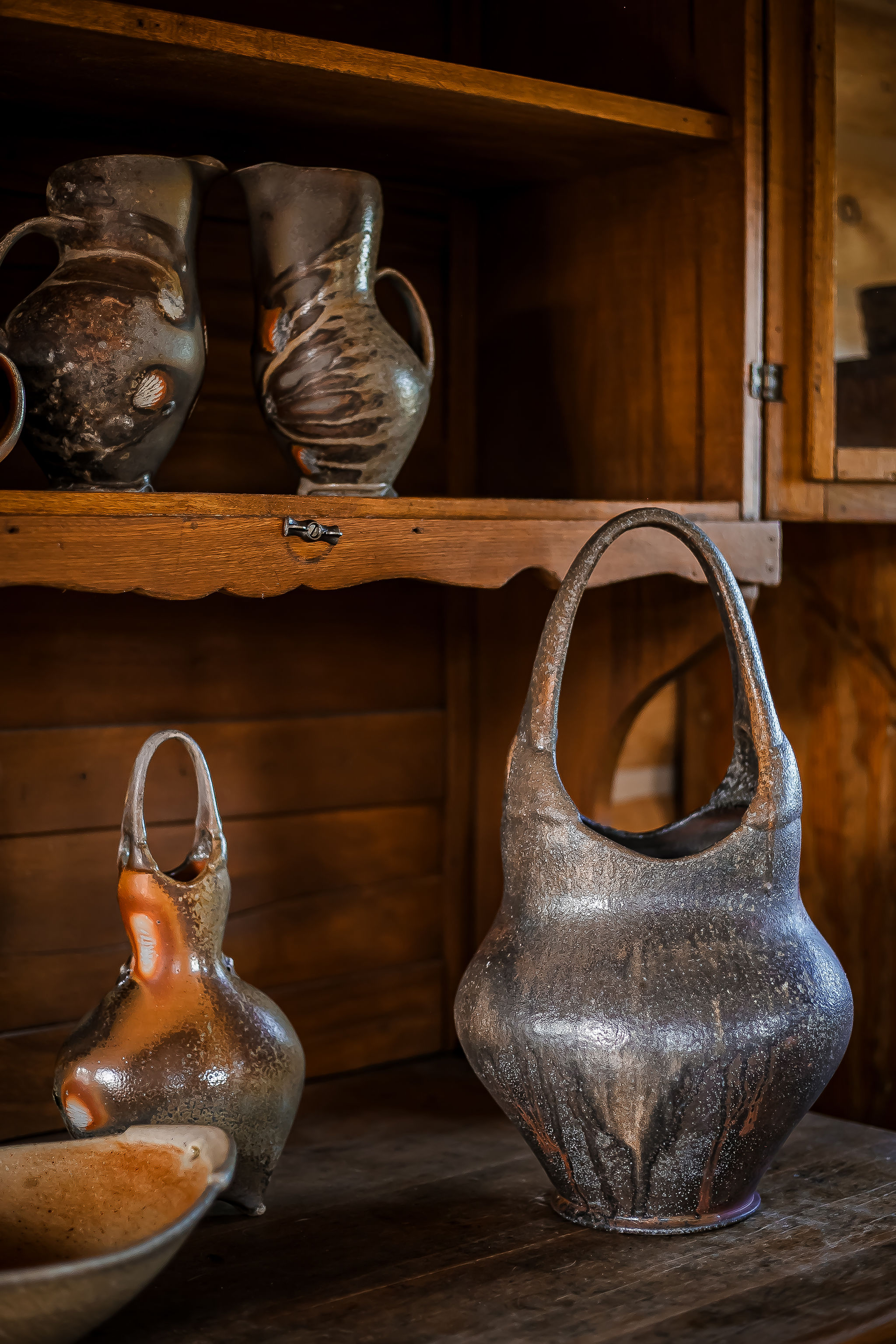 Historically, wood-fired work was masculine, with crusty, rough surfaces and angular forms. In my mind, there is room for more variety within this aesthetic. I embrace feminine forms. Soft, sensual curves that relate to the body are central to the work. These forms accentuate the wood-firing process. The full bellies and shoulders catch the ash and encourage dramatic flashing. The smooth, sleek surfaces emphasize the feminine quality.
Historically, wood-fired work was masculine, with crusty, rough surfaces and angular forms. In my mind, there is room for more variety within this aesthetic. I embrace feminine forms. Soft, sensual curves that relate to the body are central to the work. These forms accentuate the wood-firing process. The full bellies and shoulders catch the ash and encourage dramatic flashing. The smooth, sleek surfaces emphasize the feminine quality.
The Connection Between Worlds
As a wood-fired ceramic artist, my entire life revolves around dirt. I shape it, fire it, live alongside it. It coats my boots whether I’m in the studio or pushing my mountain bike up a ridgeline. Like clay, the bike responds best when you don’t fight the terrain but flow with it. I think of each firing like a trail ride or a backcountry trip: you pack, prepare, gather a team, commit to discomfort, and step into the unknown. Just as no trail ride is ever the same, no firing is either.
I started mountain biking to get myself out of the studio, find a better balance in life, and get a bit of exercise. Developing my skills as a rider relates so much to my development as an artist. For growth to happen, one must keep an open mind, a beginner’s mind. Sessioning a feature on the trail is much like the repetition of making pots. For me, that repetition isn’t boring – it’s where nuance lives. It’s where skill is gained and an eye is developed. You loop back, you revisit, and slowly, you deepen your relationship to the material and the process.
Whether I’m in the studio making pots, firing kilns, or out on the trail, it’s crucial to stay present, to observe, listen, adapt, and make choices that increase the chance for something powerful to happen. At the end of the day, I’m tired in the best way – not from screens or stress, but from real movement. From being present with the task at hand, from stacking wood, or pedaling my bike. These moments are where my two worlds meet – the wild and the domestic, the rugged and the refined.
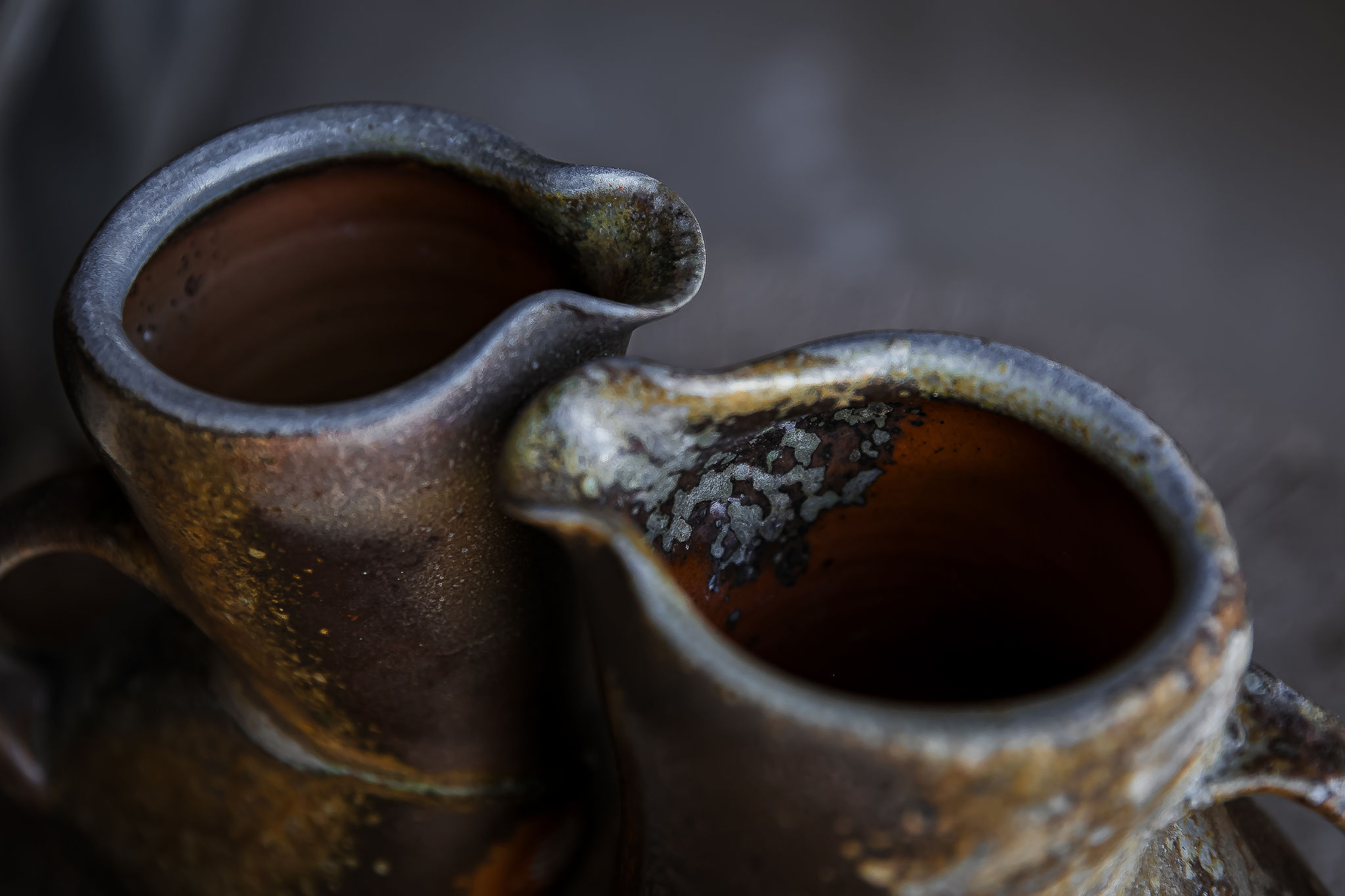
Both firing and biking require resilience; both have taught me patience as well as shown me that my body and mind are capable of much more than I initially thought possible. I’ve loaded kilns during snowstorms, placing pots with numb fingers, fired stalled-out kilns with skeleton crews operating on minimal sleep. And I’ve ridden trails where we’ve carried bikes through streams and been chased by summer hail. Both experiences live in my bones. And both have taught me to stay flexible. To stay grateful. To trust in process.
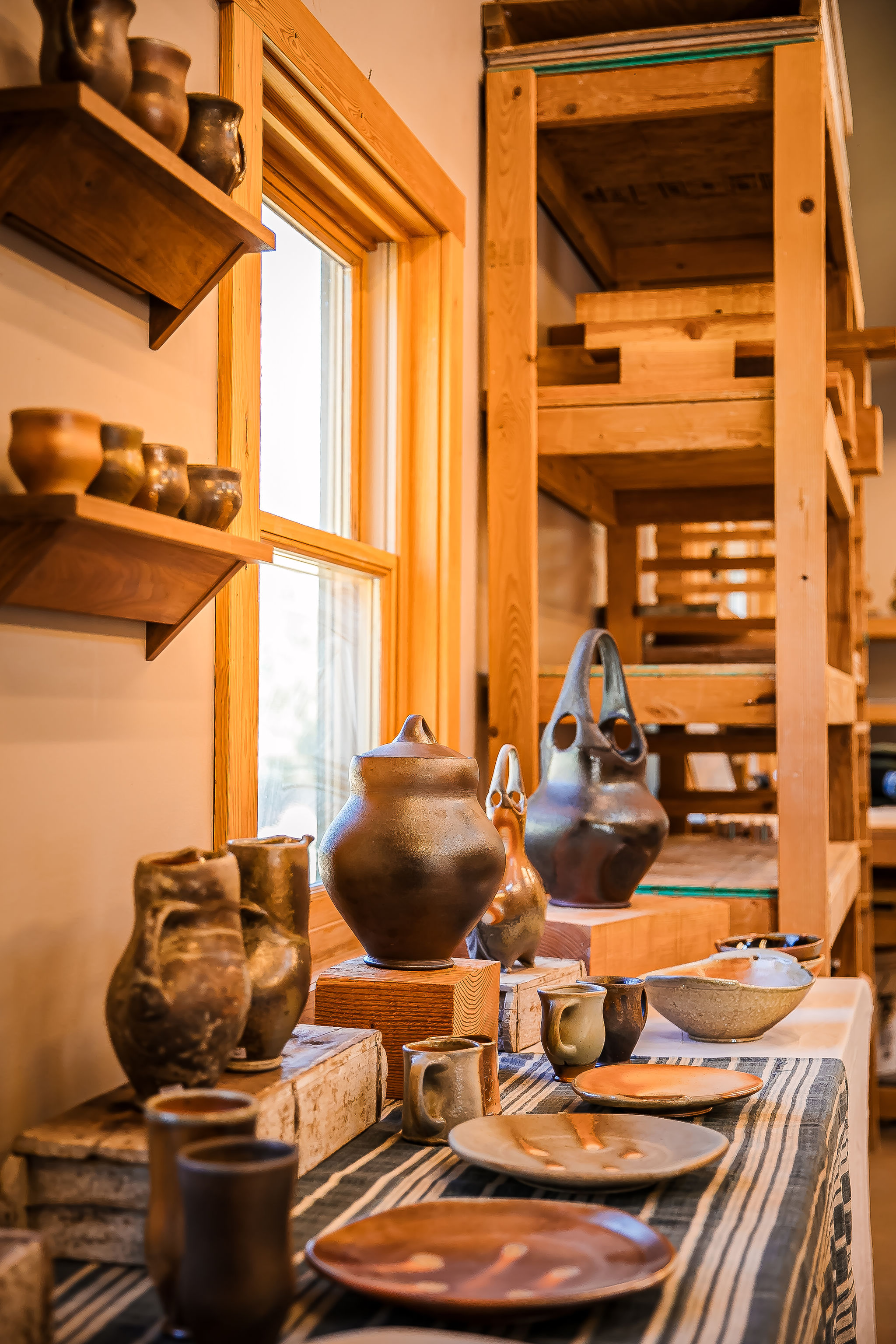 Why I Keep Firing
Why I Keep Firing
There are easier ways to make pots. I could save my back, my budget, my sleep. The process is what matters; I want the pots to carry something of that time, labor, and collaboration. Because at the heart of it, wood-firing is about being present. Listening to the clay, to the fire, to the community around me. The process can’t be rushed or outsmarted.
Every firing as well as every trail ride teaches me something new, about the technique and process, and about myself and patience, generosity. The fire, like the mountain, doesn’t lie. It shows you exactly where your attention was – or wasn’t.
I don’t believe in separating art from life. The work I make is shaped by the way I move through the world – slowly, attentively, with a healthy respect for terrain and fire. I want my work to feel grounded. Not just in aesthetics, but in ethics.


